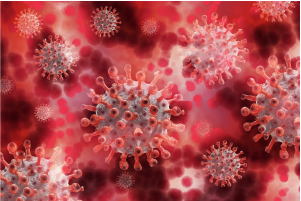COVID-19's Emergence And Impact In India
Table of Contents
The COVID-19 pandemic, the biggest public health crisis in a century, has caused an estimated 286 million cases and 5.4 million deaths till date. As the year 2021 was drawing to a close, with increasing natural and vaccine-induced immunity, the general view was that the worst is over and an end to the pandemic is in sight. The world was reopening again. But with emergence of the omicron variant, panic and fear has set in with a concern that all the gains achieved so far may be negated. This article summarizes the current knowledge about omicron and then discusses briefly the current status of the COVID-19 pandemic in children. Since this is a rapidly evolving situation, readers are requested to update themselves regularly. As most of the information is from lay media and non peer reviewed preprints, careful interpretation is required.

Omicron—An Overview
Origin and Spread of Omicron
In November 2021, researchers in Botswana and South Africa on whole-genome sequencing (WGS) identified a SARS-CoV-2 variant. It stood out, as it had more than 50 mutations in its genome; of which, 32 were in the receptor binding domain (RBD) of the spike protein. At the same time, there was a rapid increase in COVID-19 cases in South Africa, particularly the Gauteng province of Johannesburg; many of which were associated with S-gene target failure (SGTF) on the RT-PCR test. This variant was reported by South Africa to the WHO on 24th November, 2021. Almost simultaneously, isolates with similar genomic sequence were identified in Belgium, Israel, and Hong Kong. Taking cognizance of the significant numbers of mutations and rapid rise of infections in South Africa, the WHO labelled this variant just 2 days later, on 26th November, as a variant of concern (VOC) and christened it omicron. This led to many nations including India imposing a travel ban on African nations despite the fact that omicron cases were simultaneously identified in many other European countries suggesting that the variant was widespread in many countries even before it was identified.
Subsequently, the cases in South Africa, which had peaked at 40,000 per day, have started coming down rapidly in less than a month to 7,000 per day. But omicron has spread rapidly through the world and is fueling waves in other countries. S-gene target failure (SGTF) as a proxy for omicron, is allowing rapid identification of probable omicron cases pending genomic sequencing. The UK is severely affected with more than 100,000 cases per day; in London more than 90% of the patients are infected with omicron [9]. Similar waves are occurring in France, Germany, the Netherlands, and other European countries fueling lockdowns, restrictions, and a push for booster vaccinations. The variant has rapidly spread to the US adding to the ongoing delta wave [10]. On 29th December 2021 there were more than 400,000 daily COVID-19 cases in the US with omicron causing 58% of all COVID-19 cases. Omicron is now reported in more than 100 countries and caused the global case count to exceed 1 million daily cases on 28th December 2021.
Omicron has been detected in India as well, initially in patients who had returned from international travel and now also in those with no travel history. There is a rapid rise in infections in Mumbai and Delhi in the past few days [12]. The third wave of COVID-19 in India fueled by omicron is here.
Virology
Omicron shares mutations with the alpha, beta, gamma, and delta variants and others of unknown significance. The characteristics of some of these mutations are still being unraveled. Within a couple of months of its emergence, it has already split into two lineages. The behavior of omicrons in cell culture is interesting. Scientists have reported that omicron is difficult to grow in VERO cells (genetically engineered African green monkey kidney cells) like other seasonal coronaviruses and unlike SARS-CoV-2. Besides, it is less likely to cause visible damage (plaques) in these cells. Also, the ability to cause syncytia formation which is often seen in the lungs of patients dying of COVID-19 is less with omicron. Researchers from Hong Kong have reported a 10 times faster growth in bronchi as compared to delta (accounting for rapid spread) but a tenfold slower growth in the lungs. While it is still early days, these observations may account for milder disease seen with omicron.
Transmissibility
Omicron is a very highly transmissible variant with studies from South Africa and the UK reporting doubling times of 3.38 and 2–2.5, respectively with the basic reproduction number (R0) above 3. This property is accounting for its rapid spread and displacement of the prevailing delta variant.
Clinical Features and Complications
Preliminary information about omicron suggests that the median incubation period may be shorter at around 2–3 d as compared to the 5 d with the original virus. The usual symptoms reported with omicron are predominantly upper respiratory and include runny nose, sore throat, headache, fatigue (mild to severe), sneezing, night sweats, and are indistinguishable from common cold. Fever, cough, and loss of smell/taste are less common as compared to previous variants. Symptoms usually last for a couple of days followed by quick recovery.
Conclusion
However, these are early impressions and the picture may change with time. Information about behavior of omicrons in the severely immunocompromised is not available. Also despite the low severity, if the numbers are very high then the testing capacity and health care system will be overwhelmed. The possible impact of omicron on the burden of long COVID should also be kept in mind. Finally, there is the collateral damage from a massive surge of cases to the global economy, attention to other illnesses, mental health of society, and health care workers.
Also read - When Is It Appropriate To Buy A Health Insurance Policy?


















































